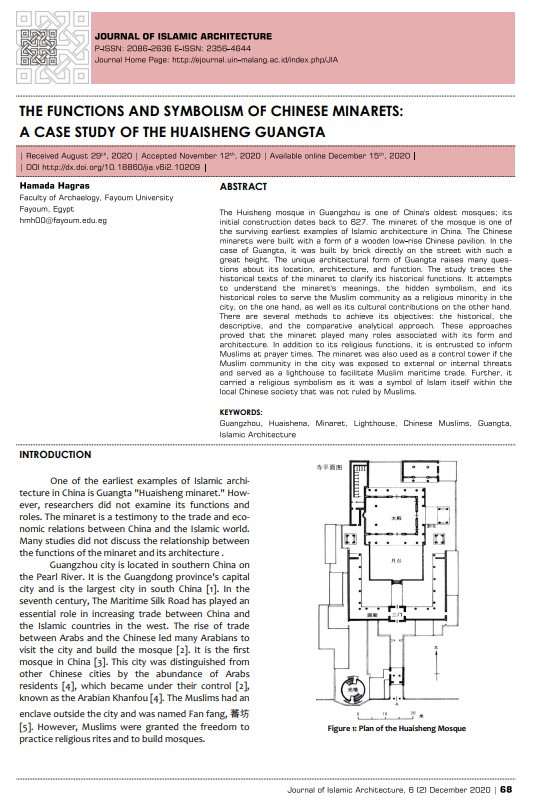
The Huisheng mosque in Guangzhou is one of China’s oldest mosques; its initial construction dates back to 627. The minaret of the mosque is one of the surviving earliest examples of Islamic architecture in China. The Chinese minarets were built with a form of a wooden low-rise Chinese pavilion. In the case of Guangta, it was built by brick directly on the street with such a great height. The unique architectural form of Guangta raises many questions about its location, architecture, and function. The study traces the historical texts of the minaret to clarify its historical functions. It attempts to understand the minaret’s meanings, the hidden symbolism, and its historical roles to serve the Muslim community as a religious minority in the city, on the one hand, as well as its cultural contributions on the other hand. There are several methods to achieve its objectives: the historical, the descriptive, and the comparative analytical approach. These approaches proved that the minaret played many roles associated with its form and architecture. In addition to its religious functions, it is entrusted to inform Muslims at prayer times. The minaret was also used as a control tower if the Muslim community in the city was exposed to external or internal threats and served as a lighthouse to facilitate Muslim maritime trade. Further, it carried a religious symbolism as it was a symbol of Islam itself within the local Chinese society that was not ruled by Muslims.
I agree to the terms outlined below:
You agree to upload and assign Mosqpedia Database the rights to use the content worldwide and in perpetuity across all current and future media platforms. Mosqpedia Database may edit, copy, adapt and translate your contribution.
The content will be distributed under the Creative Commons Attribution-Deed – Attribution-NonCommercial-NoDerivatives 4.0 International – Creative Commons
All data will be stored in line with data protection regulations.